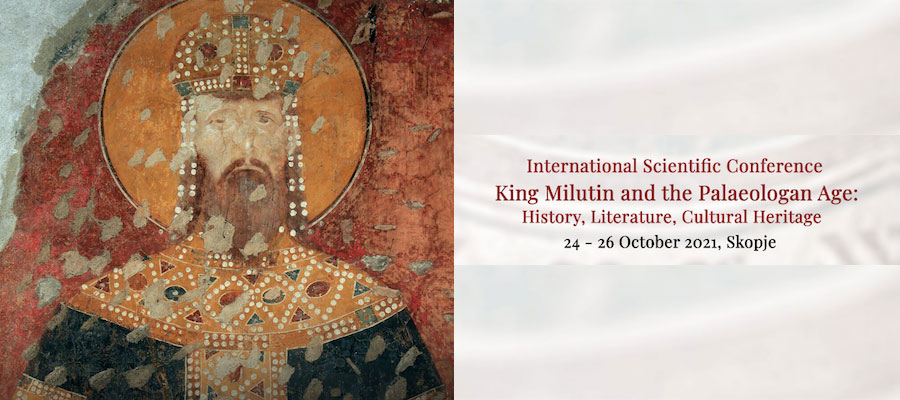King Milutin and the Palaeologan Age: History, Literature, Cultural Heritage, University of Kragujevac Online, October 24–26, 2021
On the occasion of the 700th anniversary of the death of the Holy Serbian King Stefan Uroš II Milutin (1282 ˗ 1321), the University of Kragujevac within the project EuroWeb COST Action 19131, Institute for liturgy and sacred arts - Faculty of Orthodox Theology University of Belgrade, Koç University in Istanbul, Aristotle University of Thessaloniki, Institute for Strategic Research of the Republic of Serbia, Serbian Cultural Information Center SPONA from Skopje, with the blessing of the Holy Synod of Bishops of the Serbian Orthodox Church, are organizing an international, interdisciplinary scientific conference from October 24 to 26, 2021 King Milutin and the Palaeologan Age: History, Literature, Cultural Heritage.
The reign of king Milutin (r. 1282-1321) represents a period of dynamic political and cultural interactions between Serbia and the Byzantine Empire under the Palaeologan dynasty. The conference "King Milutin and the Palaeologan Age: History, Literature, Cultural Heritage" aims to examine the wider historical, cultural and political context of these interactions and explore their impact on artistic and literary production in Serbia and Byzantium at that time. Along with military interventions that enlarged the territories of the Serbian medieval state, king Milutin and his entourage spurred extensive building and artistic activity, inviting the best Byzantine masons and artists to work for them. Thus, king Milutin’s reign was crucial in the development of architectural and artistic ideas that mark both Serbian and Byzantine art of the fourteenth century. Today the artistic achievements of king Milutin’s era are visible only in a limited number of preserved monuments and these reflect conspicuous influencе from the capital, Constantinople.
The thematic strands of the conference relate to history, architecture, wall paintings, illuminated manuscripts, clothing identity between Constantinople, East and West, liturgical textiles, textile history, the question of ruler’s tomb and his sanctity, gender history, literature, archival science, astronomy, sacral chanting, and the theological context of the period. We expect the participation of historians, art and architectural historians, archaeologists, historians of literature, theologians and all leading scholars in their fields who will bring new perspectives on the conference theme.
The official languages of the scientific conference are Serbian and English.
